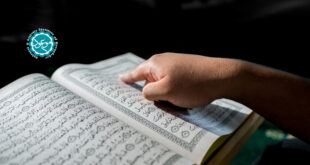Muhammad ibn Muhammad an-Nu‘man ash-Shaykh Abu ‘Abdillah al-Mufid, Ibnu ‘l-Mu‘allim, al-‘Ukbari al-Baghdadi (336/948–413/1022) was the teacher of the Shaykhu ‘t-Taifah, Abu Ja‘far at-Tusi, who said of him:
The leadership of the Imamiyyah in his own time devolved upon him; he was foremost in the science and practice of dialectical theology (kalam), a foremost jurist (faqih), and an energetic thinker with an astute mind, always ready to answer . . .1
Three centuries after al-Mufid, the ‘Allamah al-Hilli (648/ 1250–726/1325), one of the most well-known and learned of the scholars of the Imamiyyah, said this about him:
[He was] one of the most outstanding shaykhs of the Shi‘ah, their leader and their teacher, and all those who came after him relied on him. His preeminence in law (fiqh), theology, and the narration of Tradition (riwayah) is too well known to require description. [He was] the most reliable and learned of his contemporaries, and the leadership of the Imamiyyah in his time devolved uponhim; he was an energetic thinker with an astute mind, always ready to answer . . .2
In the introduction to the Kitabu ‘t-Tawhid from the Usulu ‘l- Kafi I gave a selection from the biographies which Imami scholars of theology wrote of the Shaykh al-Mufid, may Allah be pleased with him, and pointed out his particular theological position, his teachers in theology, and his works in that subject.
Professor ‘Irfan ‘Abdu ‘l-Hamid, the translator of Tashihu ‘l- i‘tiqad has likewise given, as part of his introduction, a biography of al-Mufid in which he reviews the political life and events of the Shaykh’s times, describing the political and sectarian struggle and its complications. Both the adverse and painful effects it had on al-Mufid, as well as the benefit he derived from it, are covered. This is the approach taken here in writing about al-Mufid, lest accusations of sectarianism be levelled by the likes of those who delight in the power of the sword when it falls on the necks of others, but are troubled when the wails and cries of the condemned disturb their own repose, and are even more purturbed when these groans and tragedies are recorded and documented, while they themselves remain unaffected by them.
For this reason apologies should be given in advance to our noble Sunni and Shi‘i brethren in case they come across any- thing which may offend them in Professor ‘Irfan’s book; for none of us, praise be to Allah, have had anything to do with these misfortunes. We ask nothing more of Allah than that He bestows a beneficial life of brotherhood on all Muslims, so that those who come to write the history of our own times will not have to describe it in the same way as the history of that previous age.
There are, however, in what Professor ‘Irfan mentions some defects which it will do no harm to point out. What we cite here will suffice to explain our criticisms.
Some comments on Professor ‘Irfan’s introduction
(a)
Professor ‘Irfan says3 that the Shaykh al-Mufid ‘was proud of his purely (as-sarih) Arab ancestry.’
He does not give any source for this statement, but what may have led him to this conclusion about al-Mufid was the discovery he made about the latter’s ancestry in an-Najashi4 who traces al-Mufid’s lineage back to Ya‘rub ibn Qahtan.
Now this was the kind of activity in which an-Najashi revelled as a result of his meticulous concern for genealogies. He wrote a work on the science of genealogy, which he mentioned when he gave his own biography in his Fihrist.5 His concern for lineage is also apparent in many of the biographies, which he included, and the ancestries of his subjects will be found traced back to the original tribes from which their clans arose.6
Apart from an-Najashi, others, such as the Shaykhu ‘t-Taifah at-Tusi in his al-Fihrist and ar-Rijal, wrote biographies of these people, but they lack the chains of ancestry which an-Najashi mentions.
Our Shaykh al-Mufid – in common with other Muslim scholars and jurists, and even with the devout among the Muslims who are not scholars or jurists – was more excellent in his faith, knowledge, and understanding of the Islamic shari‘ah, and nobler in character than that he should console himself by comparison with the pre-Islamic period, or boast about what Allah and His Prophet, may Allah bless him and his Family and grant them peace, had kept the believers away from: they had been warned not to boast of it, nor even to rely on it. The Messenger of Allah said in the famous sermon, which he delivered in Mekkah when Allah granted him victory over it, when He had fulfilled His promise, had strengthened His army, and had alone put the polytheists to flight:
‘O people, verily Allah has taken from you the haughtiness of pre-Islam (al-jahiliyyah) and its boasting of ancestors and clans. Men are of two [kinds]: [those who are] pious, God-fearing, ennobled before Allah, and [those who are] sinful, wretched, insignificant before Allah . . . Man springs from Adam, and Allah created Adam from dust. Being Arab does not mean [having] parentage from a [single] father, it means [having] an eloquent language, and one who was unable to speak it was not counted as one of them.’ Then he recited Allah’s words:
‘O people! We created you from male and female, and made you into peoples and tribes that you might know one another. Truly, the most noble of you in Allah’s sight is the most God- fearing. Verily, Allah is All-knowing, All-wise’ (al-Hujarat, 49:13).7
I have not come across any source in which al-Mufid himself cites, or refers to, this lineage of his, nor one in which he mentions, or refers to, an Arab tribe to which he belongs.
(b)
Professor ‘Irfan states8 : ‘Among those who wrote elegies on [al-Mufid] was his pupil, the Sharif ar-Radi.’ This can only be a slip or an unintended mistake. The Sharif ar-Radi died in the year 406/1015, two years before the death of his teacher, al-Mufid. The one who elegized him was another of his students, ar-Radi’s brother, the Sharif al-Murtada, who died in 436/1044, who elegized him with a qasidah rhyming in mim of thirty-three verses.9
The extent of Al-Mufid’s relations with As-Saduq
This book, Tashihu ‘l-i‘tiqad, is a commentary on the book I‘tiqadatu ‘l-Imamiyyah, written by as-Saduq, the Shaykh Abu Ja‘far Muhammad ibn ‘Ali ibn al-Husayn, Ibn Babawayh, al- Qummi (c 306/919–381/991). In this book, the Shaykh al-Mufid comments on the places in which he disagrees with what as- Saduq said, either in matters of independent reasoning, or con- cerning the evidence upon which as-Saduq relies, or on the grounds of the nature of the argumentation where they agree upon the evidence. Some discussion of this aspect will follow.
As for the connection between al-Mufid and as-Saduq, as- Saduq was one of those with whom al-Mufid studied in the early years of his life when he was not yet twenty years old. al- Mufid studied with him when as-Saduq was in Baghdad, and heard Traditions from him. He received his authorization (ijazah) to transmit his writings and his narrations of Traditions; thus as- Saduq was one of al-Mufid’s mentors in Traditions. I believe that the duration of this relationship was short for the following reason.
As-Saduq was born and raised in Qum and then emigrated to Rayy, where he resided until he died. He travelled in search of Traditions and other material, and made a journey to Iraq on his way to the hajj. As-Saduq himself mentions that he came to Baghdad on his way to the hajj in the year 352/963.10 It appears that he came to Baghdad towards the end of that year, because he left Rayy on a pilgrimage to Mashhad (of ar-Rida, peace be upon him) in the middle of that year.11
His hajj was in the following year, 353/964, so he must have left Baghdad in the middle of the year, considering the conditions of travel in those days, and the time, which it would have taken him to cover the distance and carry out the rites of the hajj.
What indicates this chronology of events is that as-Saduq mentions that he was in Fayd (a town half-way between Kufah and Makkah)12 in 354/965 after completing the hajj to the House of Allah,13 and that he reached Kufah in the middle of that year.14
In the same year, on his way back from Madinah, he was in Hamadan, in Iran, relatively near to his home-town of Rayy if considered in relation to Kufah.15 It is inconceivable that he should have performed the hajj in the same year, 354/965, in which he was in Fayd on his return, then in Kufah and later in Hamadan. The hajj only occurs in the last month of the lunar year, and in the light of all this it can be concluded that as-Saduq could only have stayed in Baghdad a few months, not a complete year, and that these months were at the end of 352/ 963 and at the beginning of the following year.
One therefore has to disagree with what an-Najashi states about as-Saduq reaching Baghdad in 355/96616 and all those who dated his entering Baghdad to that year took this from him because this would necessarily mean either that he returned there from Hamadan, where he was in 354/965, when he was half-way back to Rayy, or that he headed back to Baghdad a second time after reaching Rayy, and that would seem to be very far-fetched.
Whatever may have happened, the Shaykh as-Saduq reached Baghdad, narrated, and also heard, Traditions there. The Imami shaykhs studied with him, according to an-Najashi, and among them was the Shaykh al-Mufid. Naturally, in such a short time his lectures could not have included all his books and narrations, and most of them must have been narrations by proxy, not his own lectures in the strict sense of the word.
A Brief Biography of Shaykh al-Mufid
Pages: 1 2
 Mouood Mouood English Edition
Mouood Mouood English Edition



